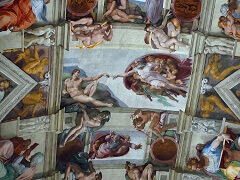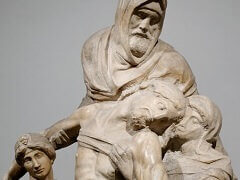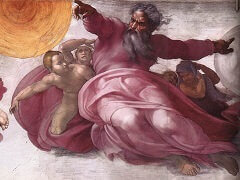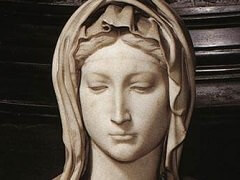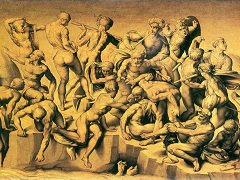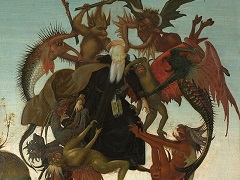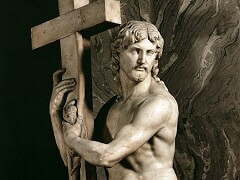The Saint Matthew, by Michelangelo
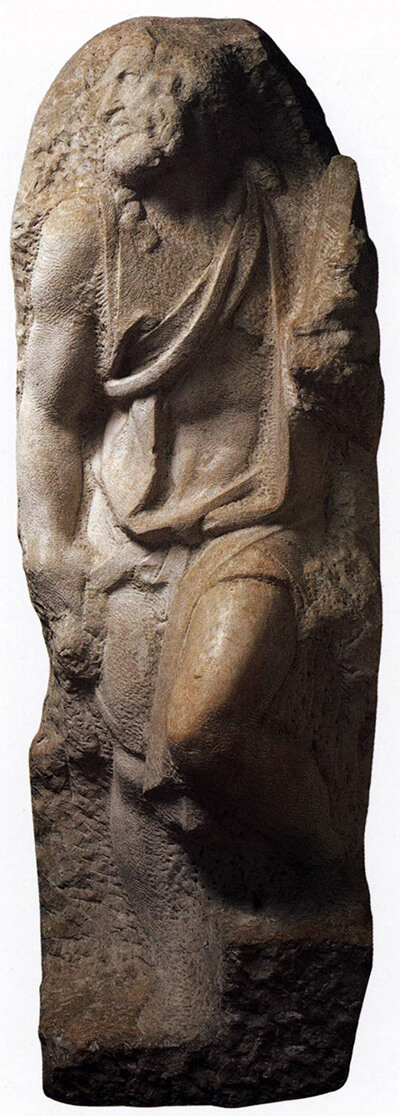
When Michelangelo had left for Rome slightly less than a year before, in March 1505, he was still the head of a demanding commission to produce a series of sculptures: the twelve Apostles for the Florentine Cathedral, commissioned by the Opera di Santa Maria del Fiore and the Wool Guild. It has often been said that the artist soon received the marble required for the work, and began to carve only one statue, the Saint Matthew, without completing it.
Emerging from the marble block still visibly roughed out is half of the potentially three-dimensional development of the figure of a mature man characterized by a powerful body clad in a tunic but with all four limbs in sight, and the particular leaning position of the right hand, whose thumb inside a fold in the fabric keeps it still.
The standing pose includes a cube-shaped base on which the figure's left foot is raised forcing the knee to protrude; this results in the unusual spiralling that passes into every part of the anatomy, in fieri, of the Evangelist apostle, all the way up to the upwards turn of his head towards divine inspiration - at once the calling and the source of the book he holds in his left hand. The daring contrapposto, the dynamism pervading the saint's body in every direction, a body that is tense and distressed as it harks the divine inspiration.


